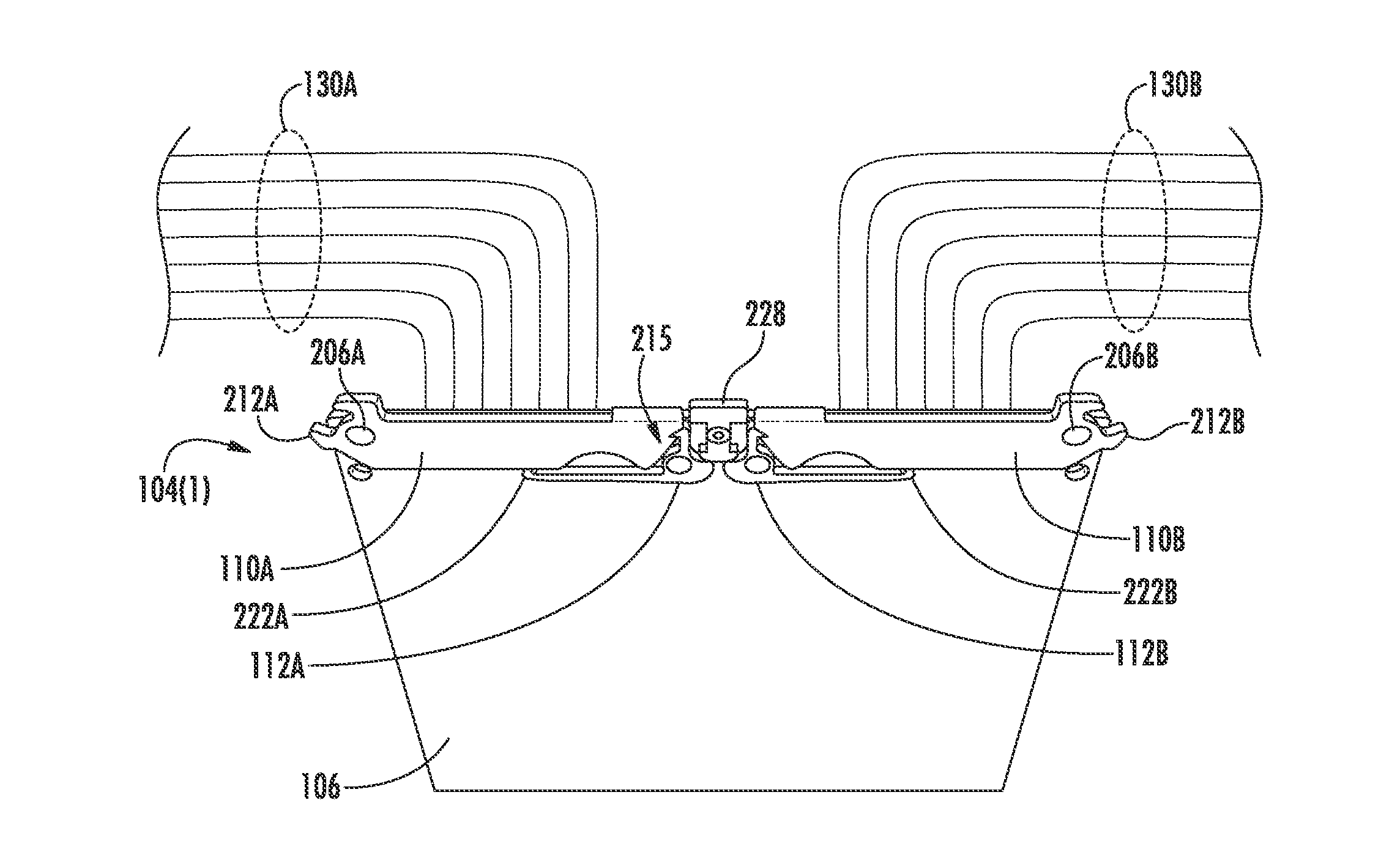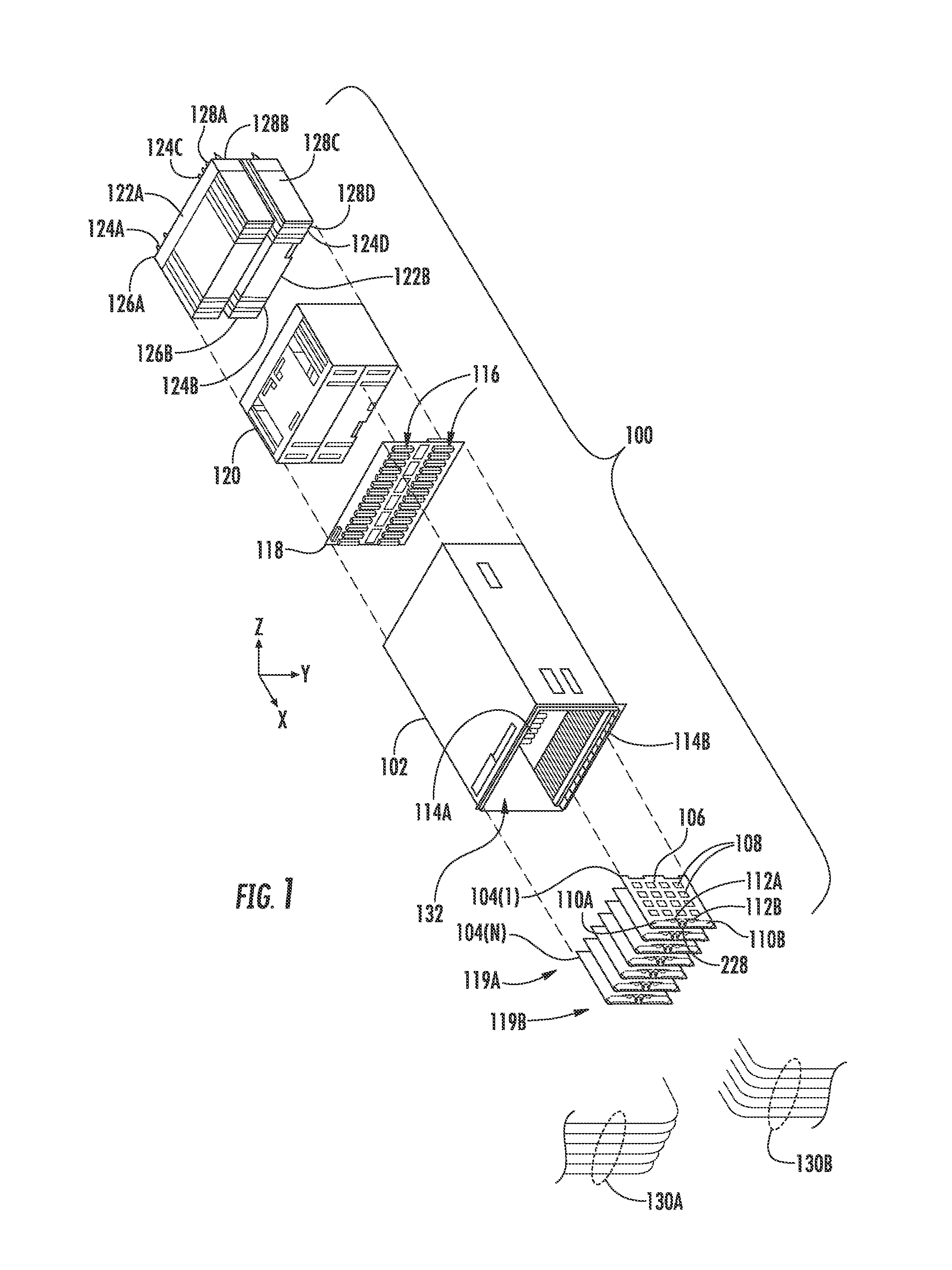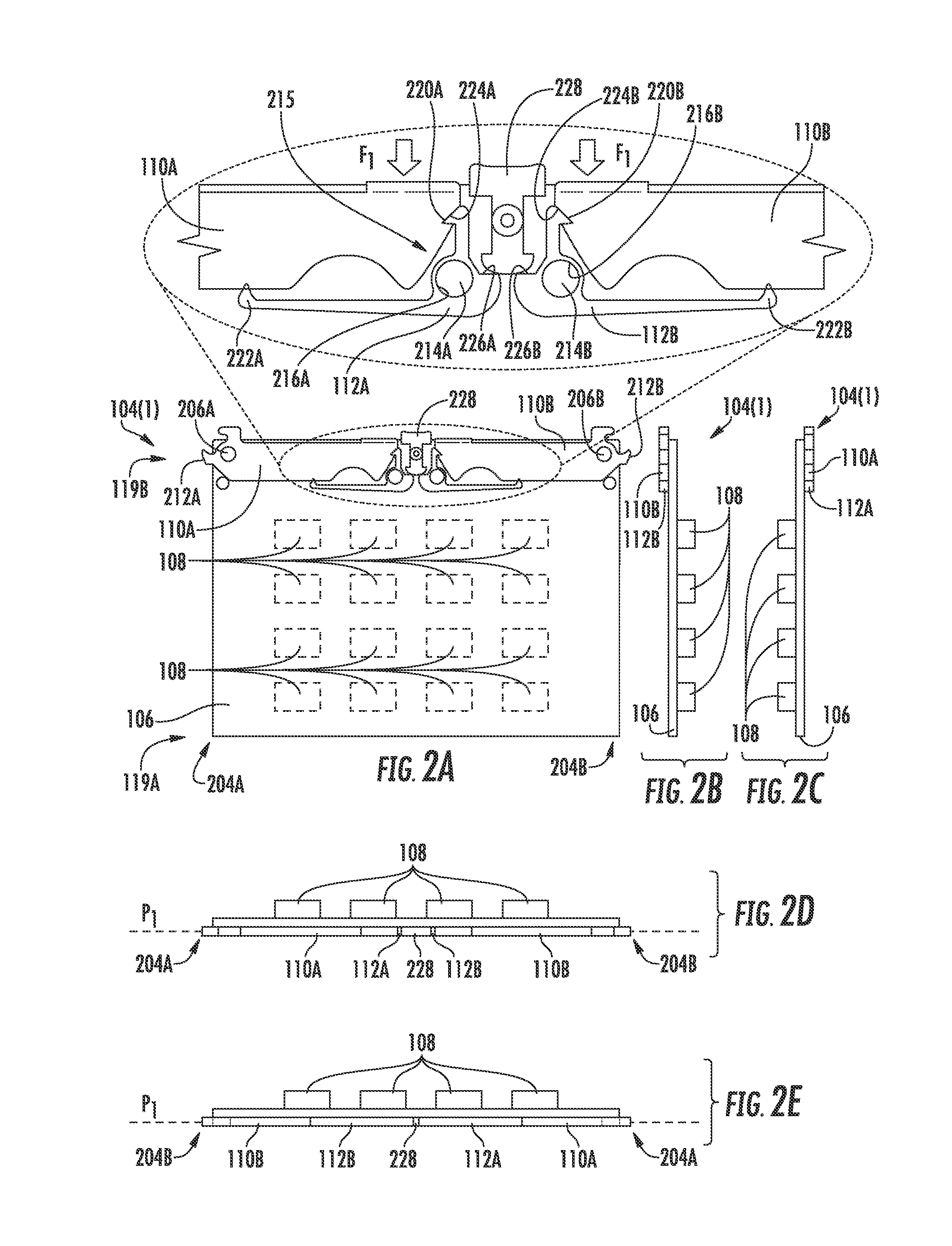Modular enclosure elements employing cams forming detent features with latches
a module and enclosure technology, applied in the field of enclosure systems, can solve the problems of becoming more difficult to identify the available volume within the enclosure to route the supply power, and achieve the effect of efficient securement and removal
- Summary
- Abstract
- Description
- Claims
- Application Information
AI Technical Summary
Benefits of technology
Problems solved by technology
Method used
Image
Examples
Embodiment Construction
[0019]Reference will now be made in detail to the embodiments, examples of which are illustrated in the accompanying drawings, in which some, but not all embodiments are shown. Indeed, the concepts may be embodied in many different forms and should not be construed as limiting herein. Whenever possible, like reference numbers will be used to refer to like components or parts.
[0020]Embodiments disclosed herein include modular enclosure elements employing cams forming detent features with latches. A modular element may include a chassis body supporting electronic components. A modular element may include a chassis body supporting electronic components. The modular element is removable from or secured to an enclosure using a latch. The latch may engage the enclosure and may remain engaged with the enclosure by being secured by interfacing with a cam. By forming the cam with a predetermined shape, a detent feature may be established with the latch to secure the latch and maintain the mo...
PUM
| Property | Measurement | Unit |
|---|---|---|
| installation force | aaaaa | aaaaa |
| axis of rotation | aaaaa | aaaaa |
| resilient | aaaaa | aaaaa |
Abstract
Description
Claims
Application Information
 Login to View More
Login to View More - R&D
- Intellectual Property
- Life Sciences
- Materials
- Tech Scout
- Unparalleled Data Quality
- Higher Quality Content
- 60% Fewer Hallucinations
Browse by: Latest US Patents, China's latest patents, Technical Efficacy Thesaurus, Application Domain, Technology Topic, Popular Technical Reports.
© 2025 PatSnap. All rights reserved.Legal|Privacy policy|Modern Slavery Act Transparency Statement|Sitemap|About US| Contact US: help@patsnap.com



